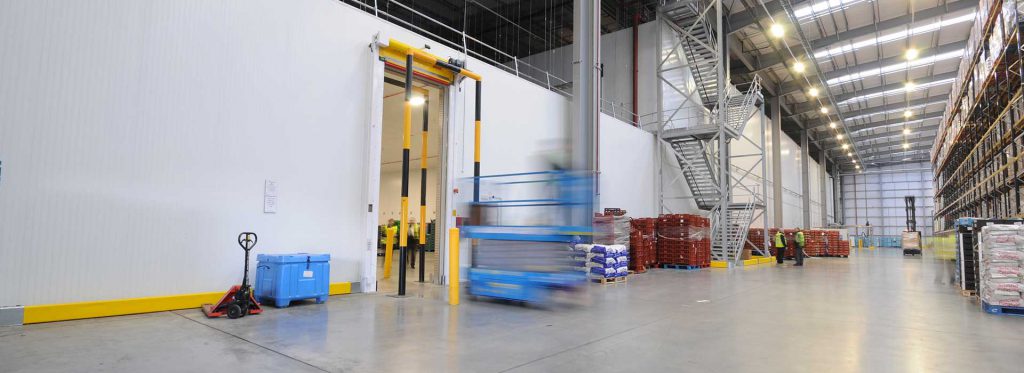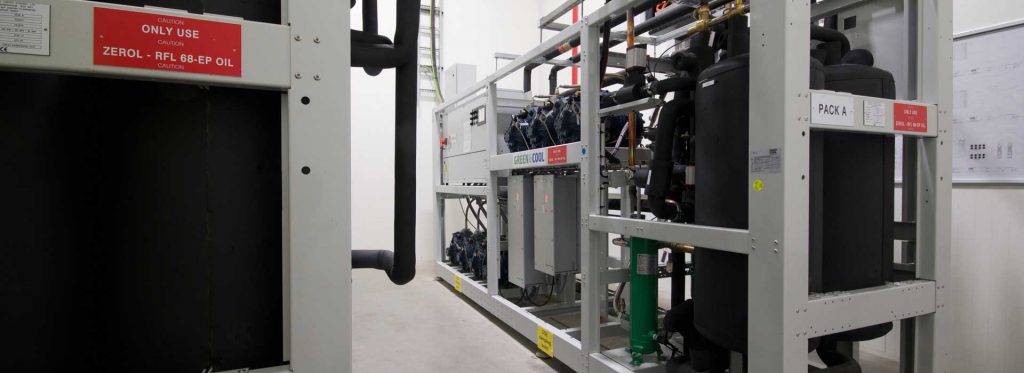This industrial application of transcritical CO2 has allowed us to demonstrate that this technology not only has a home in larger applications but it can be very cost-effective.
The simplicity of the technology and componentry allows us to apply many of the benefits seen in food retail to much larger systems. A great example of this is the use of copper pipework for installation.
As this is no longer considered “specialist” equipment the cost of maintenance is also significantly reduced.

This distribution centre scheme is an example of using transcritical CO2 in an industrial application where typically more difficult/complex natural refrigerant solutions are used. In this application, CO2 can be seen not only as an alternative to HFC based systems but also Ammonia (NH3) and hybrid secondary systems.
As this technology is widely used in food retail it opens up the user to a much wider base of trained technicians, installers and operatives giving not only a commercial benefit but also comfort that support is available through a number of avenues.

Operating essentially as a direct expansion (DX) system means that familiarity of operation is widespread and system componentry familiar.
This project has seen all of the above benefits as well as upfront cost benefits against the alternatives, while no direct comparison site on HFC/NH3 in our portfolio that we can get data from our experiences show that in the UKL a 10-15% energy saving can be expected which TEWI calculations predict to be 100,000 – 150,000 kWh/annum.
